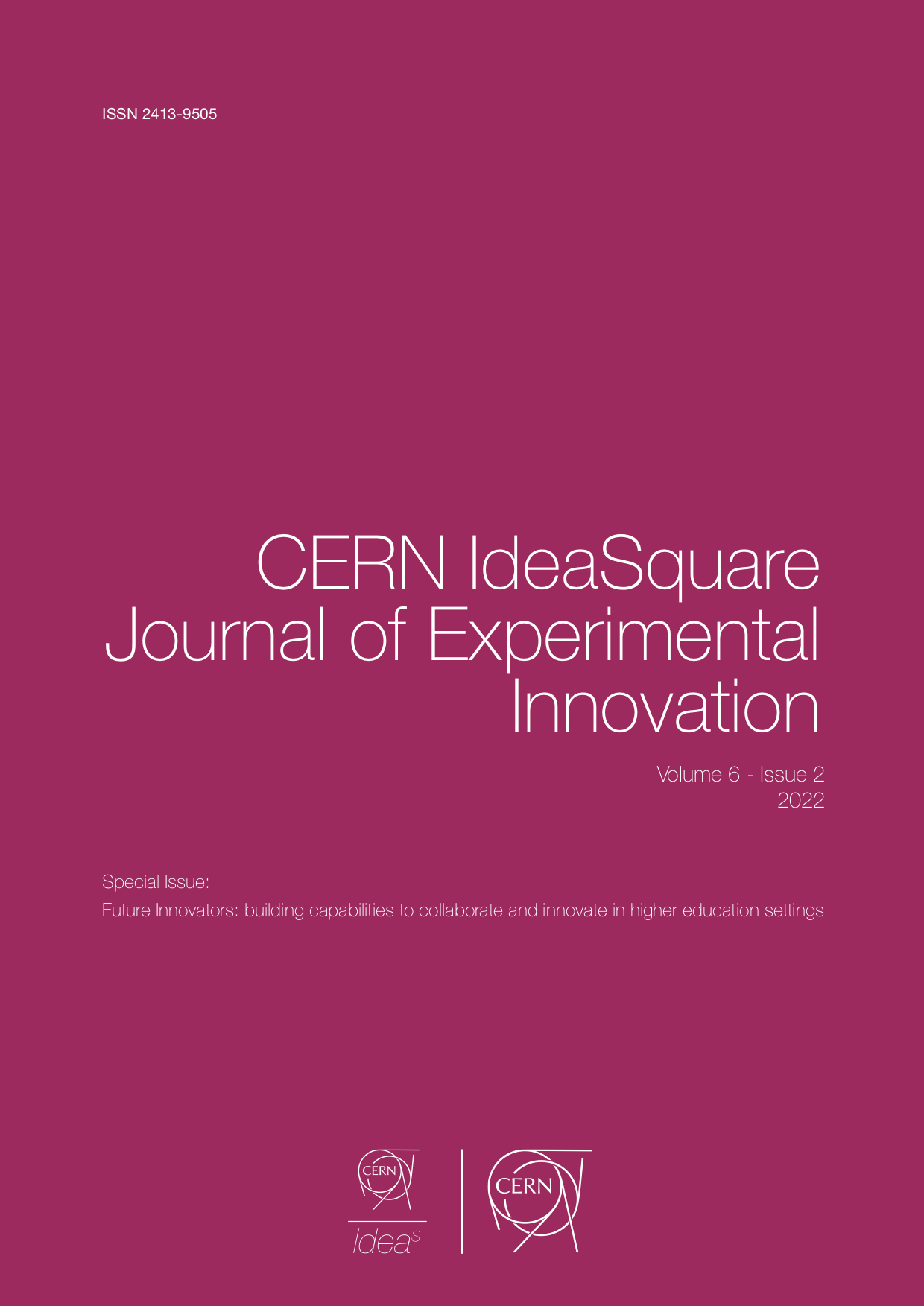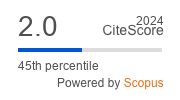Building team research targets and capacity in innovation hubs
DOI:
https://doi.org/10.23726/cij.2022.1396Keywords:
Research capacity, Research strategy, Team researchAbstract
This study describes how a multidisciplinary team at an Australian university’s innovation hub developed their research targets and capacity. The process through which research teams establish their research targets and strategies for achieving them is often tacit, which makes process sharing challenging. Referencing Situated Learning Theory (Brown et al., 1989) and using the Design and Development Research (DDR) framework (Richey and Klein, 2007) we document the process of how researchers negotiate to develop team research targets in this study. Our workshop data suggests that if researchers want to leverage the research abilities of others in their team, their targets must remain flexible. Additionally, a range of individual and organisation hinderers, barriers and enablers of conducting research were identified, that can inform practical actions to realise research strategy targets for innovation hubs.
References
Boyatzis, R. E. 1998, Transforming Qualitative Information: Thematic Analysis and Code Development. SAGE Publications, Inc, Thousand Oaks, CA, USA. https://us.sagepub.com/en-us/nam/transformingqualitative-information/book7714
Braun, V., & Clarke, V., 2006, Using thematic analysis in psychology, Qualitative Research in Psychology, 3(2), 77–101. https://doi.org/10.1191/1478088706qp063oa
Brown, J. S., Collins, A., & Duguid, P., 1989, Situated Cognition and the Culture of Learning, Educational
Researcher, 18(1), 32–42. https://doi.org/10.3102/0013189X018001032
Cobb, P., & Bowers, J., 1999, Cognitive and Situated Learning Perspectives in Theory and Practice, Educational Researcher, 28(2), 4–15. https://doi.org/10.3102/0013189X028002004
Cooke, J., 2020, Building Research Capacity for Impact in Applied Health Services Research Partnerships Comment on ‘Experience of Health Leadership in Partnering With University-Based Researchers in Canada – A Call to “Reimagine” Research’, International Journal of Health Policy and Management, 1. https://doi.org/10.15171/ijhpm.2020.11
Geertz, C., 1973, The Interpretation of Cultures. Basic Books, Inc.
Greeno, J. G., 1998, The Situativity of Knowing, Learning, and Research, American Psychologist, 53(1), 5–26.
https://doi.org/10.1037/0003-066X.53.1.5
Hammad, W., & Al-Ani, W., 2021, Building Educational Research Capacity: Challenges and Opportunities From the Perspectives of Faculty Members at a National University in Oman, SAGE Open, 11(3), 215824402110326. https://doi.org/10.1177/21582440211032668
Iles-Smith, H., & Ersser, S., 2019, The DINARC© Toolkit—Clinical Academic Research Capacity-Building and Post-Doctoral Development for Nurses, Midwives and Allied Health Professionals (NMAHP), International Journal of Practice-Based Learning in Health and Social Care, 7(2), 25–35. https://doi.org/10.18552/ijpblhsc.v7i2.645
Lave, J., & Wenger, E., 1991, Situated learning: Legitimate peripheral participation. Cambridge University Press, Cambridge, UK.
Levinthal, D. A., & March, J. G., 1993, The myopia of learning, Strategic Management Journal, 14(S2), 95–112. https://doi.org/10.1002/smj.4250141009
Locke, E. A., Smith, K. G., Erez, M., Chah, D.-O., & Schaffer, A., 1994, The Effects of Intra-individual Goal Conflict on Performance, Journal of Management, 20(1), 67–91. https://doi.org/10.1177/014920639402000104
Matus, J., Walker, A., & Mickan, S., 2018, Research capacity building frameworks for allied health professionals – a systematic review, BMC Health Services Research, 18(1), 716. https://doi.org/10.1186/s12913-018-3518-7
Murray, J., & Vanassche, E., 2019, Research capacity building in and on teacher education: Developing practice and learning. Nordisk Tidsskrift for Utdanning Og Praksis, 13(2), 114–129. https://doi.org/10.23865/up.v13.1975
Richey, R. C., & Klein, J. D., 2007, Design and development research methodology. In: Design and development research: Methods, strategies, and issues. Lawrence Erlbaum Associates, Hillsdale, NJ, USA.
Richey, R. C., Klein, J. D., & Nelson, W., 2004, Developmental research: Studies of instructional design and development. In: D. Jonassen (Ed.), Handbook of research for educational communications and technology (2nd ed., pp. 1099–1130). Lawrence Erlbaum Associates, Hillsdale, NJ, USA..
Ryle, G., 2009, The thinking of thoughts: What is ‘le Penseur’ doing? In: Gilbert Ryle Collected Essays 1929—1968 (1st ed., p. 17). Routledge, Milton Park, UK. https://web.archive.org/web/20080410232658/http://lucy.ukc.ac.uk/CSACSIA/Vol11/Papers/ryle_1.html
Stetler, K. L., & Magnusson, M., 2015, Exploring the Tension between Clarity and Ambiguity in Goal Setting for Innovation: Clarity and Ambiguity in Goal Setting for Innovation, Creativity and Innovation Management, 24(2), 231–246. https://doi.org/10.1111/caim.12102
Tan, L., 2021, From Reflective Practitioner to Learning Professionals: The role of reflecting and learning in architecture teams [Swinburne University of Technology]. https://researchbank.swinburne.edu.au/items/e20941a5-21e3-4bfb-ab32-2a280e8b2823/1/
Tatto, M. T., 2021, Developing teachers’ research capacity: The essential role of teacher education, Teaching Education, 32(1), 27–46. https://doi.org/10.1080/10476210.2020.1860000
Tobi, H., & Kampen, J. K., 2018, Research design: The methodology for interdisciplinary research framework, Quality & Quantity, 52(3), 1209–1225. https://doi.org/10.1007/s11135-017-0513-8
Yin, R. K., 2018, Case Study Research and Applications: Design and Methods (Sixth edition), SAGE, Thousand Oaks, CA, USA.
Zhou, J., & Shalley, C. E., 2003, Research on employee creativity: A critical review and directions for future research. In: Research in Personnel and Human Resources Management (Vol. 22, pp. 165–217), Emerald, Bingley, UK. https://doi.org/10.1016/S0742-7301(03)22004-1
Downloads
Published
How to Cite
Issue
Section
Categories
License
Copyright (c) 2022 Linus Tan, David Mesa, Christine Thong, Pauliina Mattila, Anita Kocsis, Aaron Down, Stefan Lodewyckx

This work is licensed under a Creative Commons Attribution 4.0 International License.
Authors who publish with this journal agree to the following terms:
- Authors retain copyright and grant the journal right of first publication with the work simultaneously licensed under a Creative Commons Attribution License that allows others to share the work with an acknowledgement of the work's authorship and initial publication in this journal.
- Authors are able to enter into separate, additional contractual arrangements for the non-exclusive distribution of the journal's published version of the work (e.g., post it to an institutional repository or publish it in a book), with an acknowledgement of its initial publication in this journal.
- Authors are permitted and encouraged to post their work online (e.g., in institutional repositories or on their website) prior to and during the submission process, as it can lead to productive exchanges, as well as earlier and greater citation of published work (See The Effect of Open Access).


